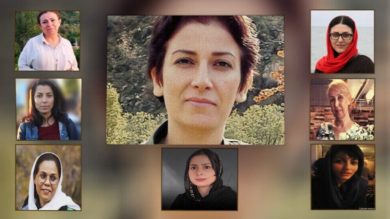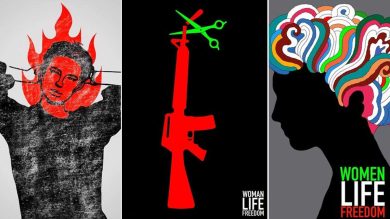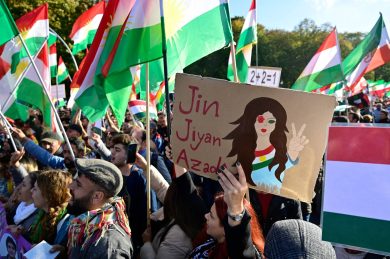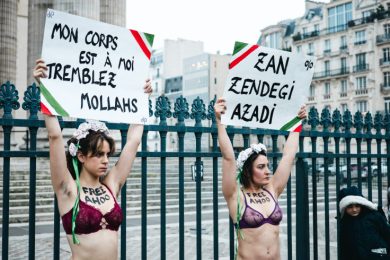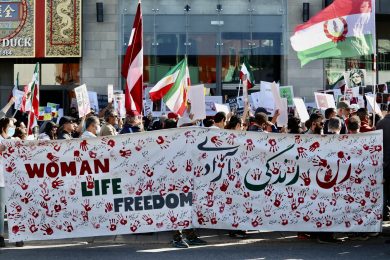Tehran – In the shadow of state censorship and political repression, Iranian artists, musicians, filmmakers, and writers are defying silence. Their canvases, lyrics, scripts, and performances have become acts of rebellion, offering a voice to the voiceless and painting a vivid image of resistance in the face of authoritarian rule.
While the regime’s apparatus, particularly the Islamic Revolutionary Guard Corps (IRGC), continues to suppress protest and police public behavior, Iran’s cultural creators are turning art into activism, crafting a movement of dissent that transcends borders and languages.
Culture as a Tool of Protest
Art in Iran has long served as more than mere expression; it is a weapon of truth, a vehicle for social critique, and a symbol of survival. In recent years, especially since the eruption of the “Women, Life, Freedom” movement after the death of Mahsa Amini, artists have taken on a renewed and bold role in challenging oppression.
From murals that depict the pain of political prisoners to underground films documenting the struggles of women, every artistic act becomes a political statement.
“When they take away our words, we speak in color, music, and motion,” said an underground visual artist in Tehran, who asked to remain anonymous for safety.
The IRGC and Cultural Repression
The IRGC’s control over Iran’s cultural landscape is extensive. Through censorship boards, arrests of artists, and closure of exhibitions, the IRGC enforces what it deems as “Islamic values” and silences any form of dissent or deviation.
Artists who produce content critical of the government or explore taboo themes—such as women’s rights, political freedom, or religious reform—risk:
• Interrogation and arrest
• Blacklisting from government-sponsored galleries and studios
• Destruction or confiscation of their work
• Forced exile
But the tighter the regime tries to grip, the more voices slip through their fingers.
Visual Arts: Resistance on Canvas
In the wake of protests, powerful visual works have surfaced, depicting:
• Women burning hijabs
• Faces covered in red to symbolize martyrs
• Children staring at barbed wires
These images are often shared online or painted in public spaces before being quickly removed by authorities—yet not before being photographed, shared globally, and turned into viral symbols of resistance.
Iranian graffiti artists, like the anonymous “Black Hand”, use stencils and street art to call attention to gender inequality, often drawing comparisons to Banksy for their bold, subversive imagery.
Cinema and Storytelling: Telling the Truth They Can’t Say
Despite government control over film production, independent filmmakers continue to produce short films and documentaries that:
• Chronicle the lives of political prisoners
• Depict state violence during protests
• Capture the quiet strength of women resisting through everyday acts
Filmmakers like Jafar Panahi, who has been arrested and banned from filmmaking, continue to produce powerful work—often filmed in secret, smuggled out of the country, and screened at international film festivals.
“They can imprison me, but they cannot imprison my stories,” Panahi once said.
Music: The Rhythm of Uprising
Music has always been a powerful tool for resistance in Iran, especially among youth and marginalized communities. From underground rock bands to female soloists banned from performing publicly, Iranian musicians are amplifying the voice of resistance.
Since the 2022 uprising, songs like “Baraye” by Shervin Hajipour have become anthems of protest, uniting millions in grief and hope. The song, inspired by real tweets about life under oppression, was viewed over 40 million times before it was taken down by authorities.
“They arrested him, but his song was already in our hearts,” said a protester in Rasht.
Literature and Poetry: Echoes of Defiance
Iran has a rich legacy of revolutionary poets, from Forough Farrokhzad to Simin Behbahani. Today’s writers continue in that tradition, often publishing under pseudonyms or from exile.
New poetry anthologies are emerging that feature:
• Women’s voices describing life under surveillance
• Poems from behind bars
• Writings that memorialize protestors killed in demonstrations
These works are shared via Telegram channels, WhatsApp groups, and PDFs on encrypted drives, keeping the spirit of resistance alive through verse.
Fashion and Performance: Redefining Identity
Iranian women are reclaiming their bodies and identities through fashion and dance—two forms of expression heavily restricted under Iran’s morality codes.
Young women now post videos removing the hijab, dancing in public, or wearing symbolic colors—all under threat of arrest. These acts are often shared virally, turning personal expression into a political act.
“Even walking down the street uncovered is a performance of protest,” said a 23-year-old student in Mashhad.
Art in Exile: The Diaspora Keeps Creating
Many of Iran’s most prolific artists now live in exile. From Berlin to Los Angeles, these creators use their platforms to:
• Organize exhibitions on Iranian resistance
• Raise funds for political prisoners
• Produce art that tells Iran’s untold stories to a global audience
Artists like Marjane Satrapi, whose graphic novel “Persepolis” remains a staple of political art, continue to inspire new generations of Iranian creators and activists abroad.
Censorship vs Creativity: A Battle the IRGC Can’t Win
While the IRGC tries to silence creative expression, art always finds new ways to flourish—through symbols, metaphors, or encrypted platforms. For every gallery shut down, a new underground exhibition opens. For every artist silenced, a dozen more rise.
The regime may control the media, but it cannot control meaning. In the face of fear, art remains the last free frontier, and Iranians are using it to imagine and manifest a freer future.
Global Support for Iranian Creators
International support has become crucial. Here’s how the global community can help:
• Amplify Iranian art and share it widely
• Support exiled artists through grants and residencies
• Pressure tech platforms to protect digital freedom in Iran
• Call on cultural institutions to boycott IRGC-sponsored events
Art is not just a reflection of resistance—it is the engine of resistance. Supporting Iranian creators means strengthening the movement for freedom.
Conclusion: The Revolution Has a Palette
Iran’s revolution is not only fought in streets and prisons—it’s painted on walls, written in poems, sung in verses, and screened in secret theaters. Art is the pulse of Iran’s resistance, and artists are its beating heart.
The IRGC may have weapons, prisons, and censorship—but Iranian creators have truth, beauty, and courage. And in the long arc of history, it’s the storytellers, not the jailers, who shape the world.
Join Our Newsletter!
Stay informed with the latest updates, news, and ways to take action in the fight for justice and global security. Sign up now to get updates delivered straight to your inbox!

